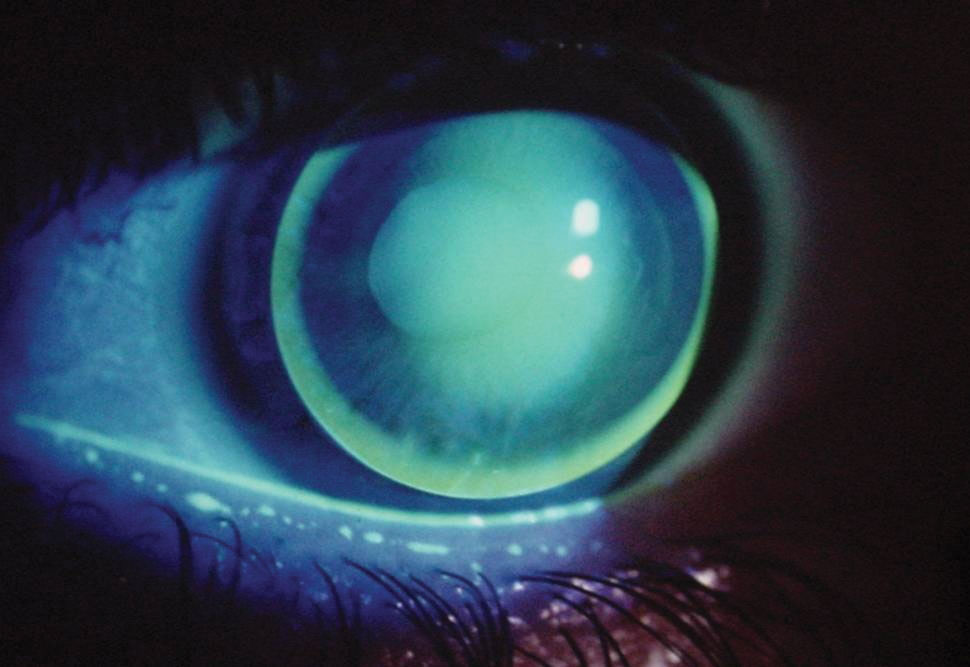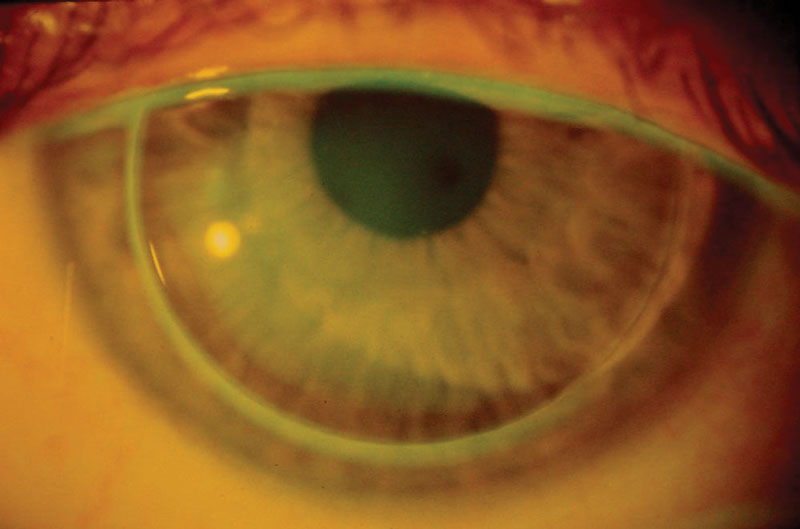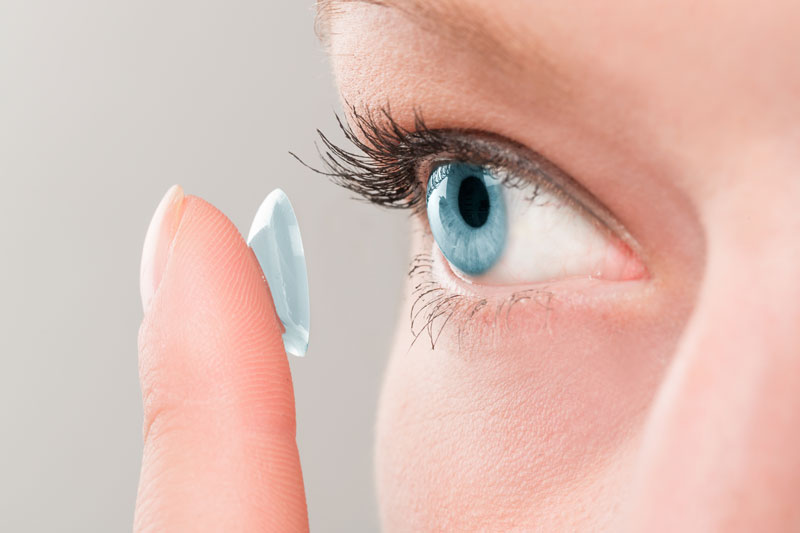A recent study estimates 1.8 billion people globally have presbyopia, 826 million of whom have near vision impairment because they have inadequate vision correction—or none at all.1 This staggering number is on the rise, the study authors note.1 Many attribute the global high prevalence of unmanaged presbyopia to a lack of awareness and access to affordable treatment in the developing world, but research identifies the same unmet need in developed countries, too.2
Multifocal contact lenses can—and should—be the answer to many presbyopes’ vision concerns, yet one study found contact lens prescribing to patients 45 years and older was only 37%.3 In addition, about 42% of spectacle wearers are presbyopes, compared with just 24% of contact lens wearers. Still, spectacle-wearing presbyopes prefer contact lenses as often as non-presbyopes and demonstrate an interest in contact lens wear.4 This disparity between patient interest in contact lens wear, the number of multifocal prescriptions and the growing number of presbyopes is a critical opportunity for optometry.
Here is a look at how optometrists are overcoming the multifocal prescribing hurdles to provide their presbyopic patients the best vision correction options available.
 |
Discussing presbyopia’s impact on your patient’s vision early will reap many benefits. |
Know Your Audience
Although presbyopes are still patients in their 40s and older, they aren’t the same patients they once were. Retirement-age Americans are feeling healthier than ever, with more than 75% aged 65 or older reporting being in good, very good or excellent health—a demographic that has grown steadily over the past 35 years.5 Of workers older than 65, 77% said they had no limitations on the kind of work they can do.5
“Today’s presbyopes are active folks who lead demanding schedules filled with travel, fitness and fun,” Pamela Lowe, OD, of Professional Eye Care Center in Illinois, says. “They are and want to look and feel more youthful.”
These presbyopes make the best multifocal lens candidates because “those who work in a dynamic environment with various working distances will appreciate the freedom from reading glasses,” according to Robert Ensley, OD, of Gaddie Eye Centers in Kentucky. Patients with an active lifestyle who don’t have an unrealistic demand for their vision will make excellent patients, he adds.
According to Shalu Pal, OD, who practices in Yorkville, Toronto, ideal patients include those who are frustrated with reading glasses or progressives and active patients who need hands free and head-tilting free vision—patients who want easy, functional vision at all ranges and all angles.
“I like to recommend multifocals to anyone who does outdoor activities, so they don’t have to constantly wear glasses,” says Stephanie Woo, OD, of Havasu Eye Center in Arizona. Many presbyopic patients in Dr. Woo’s practice who wear multifocals use them part-time, only using them when they are at the gym, hiking, boating or playing sports.
“Many times patients feel if you wear contact lenses, it is a full-time commitment,” Dr. Lowe adds. “Let patients know they can be a weekend warrior or occasional social wearer, especially with the single-use lenses now available.”
“Sometimes these patients slip through the cracks because they have never expressed interest in contact lens wear before or have never been asked,” Dr. Ensley points out.
When considering a patient’s vision correction options, optometrists should not assume that presbyopic status, wear time, refractive error, or gender are factors that preclude a patient from being interested in multifocal contact lens wear.4
Educate Early
When a presbyopic patient is in your chair, you have their undivided attention and a prime opportunity to talk to them about the condition. Having a conversation early about presbyopia’s impact on their vision will reap many benefits and can help to assuage their fears.
“Ask about near work demand, eye fatigue and trouble focusing,” Dr. Ensley suggests. “Even if the patient isn’t struggling at the time, I might mention that when those issues arrive we have plenty of options for them to remain successful with contact lenses.”
Dr. Lowe suggests getting into the habit of mentioning multifocal contact lenses as a viable option for every potential presbyopic patient. It should become an important example of how you can correct your patient’s distance and near visual needs, she says.
Dr. Geffen discusses all three vision correction options—glasses, contacts or surgery—so the patient knows he is the source for all of their vision-related questions and concerns.
Others such as Dr. Pal help provide a long-term plan at the end of their assessment if they see presbyopia becoming a problem. “I offer them their multifocal options that best match their prescription regardless if they have asked for contact lenses or not,” she says.
Temper Expectations
Presbyopia reduces vision-related quality-of-life, and although various vision correction options can improve it, nothing can restore vision to its pre-presbyopic state.6
“We give proper expectations to our patients and try to under promise and over deliver,” David Geffen, OD, of Gordon Schanzlin New Vision Institute in San Diego, says.
Dr. Woo suggests a handout outlining what to expect could help patients be fully aware of what vision outcomes to expect.
“Once a patient understands the advantages and limitations they will experience with lenses, they become an engaged partner with the doctor in achieving the best outcome,” explains Dr. Lowe.
The OutliersThere will always be presbyopic patients who won’t do well in multifocal lenses or have unrealistic vision correction expectations. While everyone wants be independent of eyeglasses, some might still need it as a supplement. “Emmetropes or very low hypertropes desperately want to be free from readers, but typically want to compare the distance vision with multifocals to what they are used to unaided,” Dr. Ensley notes. Patients with occupations that require extensive distance demands, such as pilots, engineers and truck drivers, might not be the best fit for full-time multifocal lens wear. |
Choose the Right Lens
Multifocal contact lens materials, designs and replacement schedules have come a long way from the time Dr. Lowe started fitting contacts more than 30 years ago. The optics and comfort have improved considerably, and there are lens choices to fit every lifestyle, she says. “Doctors need to stay educated on the latest multifocal advances so they know what’s available to fulfill patient needs and expectations,” Dr. Lowe says. To choose the right lens, clinicians first need to know about the patient’s visual environment.
“Teasing out when they would like to wear lenses, what visual activities they perform and what their visual environment entail are key,” she explains.
“We first go through a series of questions about lifestyle and then decide on which distances are most important for the patient,” Dr. Geffen explains. He focuses first on providing the patient with excellent distance vision and tells them they can modify the near at the next visit, if necessary. “I like this approach because if the patient is unhappy with the distance they may not even wear the lenses to give them the chance to adapt,” he adds.
Dr. Ensley emphasizes the importance of a lens’s replacement schedule. “New contact lens wearers almost always get daily disposable lenses to start them off on the path of better compliance,” he says. Once they move to a multifocal, daily disposable lenses give patients the flexibility to choose part-time wear if they want and still remain in an ideal modality.
However, if the patient is already in a monthly lens and comfortable with the material, Dr. Ensley will start with that brand’s multifocal. If that brand is unsuccessful, he will switch to another brand with a different optical design.
Soft vs. GP. A key decision involves whether to use soft or gas permeable (GP) multifocal lenses. Each modality brings benefits to the table, the experts say.
Soft lenses offer good initial comfort, and the daily disposable lenses are a excellent option for the occasional or social wearer, according to Dr. Lowe.
However, “rigid multifocal lens options are great for more customized designs to give the patient better clarity, especially by having options in translating designs vs. the simultaneous vision of soft lenses,” she adds.
A patient’s prescription will ultimately determine whether they qualify for a standard soft multifocal lens or a custom GP multifocal lens, Dr. Woo says. “Soft lenses are easier to fit, easier to stock in office and require less chair time, so patients can leave wearing them, but they can offer less precise vision and more limited parameters,” she notes.
A more customizable GP lens can help patients with higher prescriptions but requires more chair time and a delay for ordering. “GPs are also associated with higher fitting fees and cost,” Dr. Woo adds.
Dr. Ensley finds that patients pursuing a GP lens option need to understand comfort requires an adaptation period, but motivated patients will do quite well. “GP lenses also correct astigmatism of 0.75D or more much better than soft multifocals,” he explains.
However, if a presbyopic patient interested in multifocals is already wearing GP lenses, offer them an option in that type, Dr. Geffen says. “Most of my patients do not want to go with GPs if they have never worn lenses, so most start with soft,” he notes. “If I cannot satisfy their visual need then we try GPs.” Dr. Geffen also finds that the older patients have somewhat reduced corneal sensitivity, and often do well with GP multifocals.
Fitting. The entire multifocal process requires a higher level of commitment from both the patient and optometrist. Before she begins a new fit, Dr. Pal provides her patient with all of the details of the process: the time commitment, the length of the visits, vision expectations and costs. If, for any reason, the patient does not want to proceed because one or more of the topics do not resonate with them, her team knows prior to starting the fit.
“If you properly prepare your patients with more information, they are more likely to be on board with your directions and comply because they made an informed decision to proceed,” Dr. Pal says.
“At the initial exam we find a pair of lenses that are comfortable and perform well visually in the office, Dr. Ensley says. “Then we send the patient out in the real world to try the lenses.” Dr. Ensley then follows up one to three weeks later to troubleshoot, if needed.
Staff, especially contact lens technicians, well educated in fitting multifocals and aware of the options can contribute to a successful fit, according to Dr. Lowe.
She believes that another key factor is having the patient know proper care and maintenance of the lenses they wear. “A well-trained contact lens technician can educate and train the patient efficiently and effectively,” she adds.
 |
| Consider GP multifocal lens options for more customized designs that give better clarity. |
Common Apprehensions
Despite better lens materials and designs, many patients still struggle with multifocal lens wear. One study found 15% of presbyopic patients permanently discontinued contact lens wear, reporting poor vision (38%), discomfort (34%), convenience (20%) and cost (6%) as the primary reasons for discontinuation.7
Patients lost to contact lens wear had a worse overall opinion of their distance, intermediate and near vision compared with subjects still wearing their contact lenses.7 If you address these three issues, you can ease your patients’ concerns and boost your multifocal fitting success:
Comfort. Presbyopes are a unique group of contact lens wearers with distinct visual demands compared with non-presbyopic patients. But good vision must be paired with comfort, too. One study found that presbyopes of all refractive errors prefer contact lens correction when they can achieve both good vision and comfort.4
“Patients might ask about cost, but if they are happy with comfort and vision, I seldom have patients go back to single vision on the basis of cost alone,”says Dr. Ensley.
“We connect comfort with compliance,” Dr. Geffen says. To make sure his patients are as comfortable as possible in their lenses, he focuses on the importance of hygiene and follow-up care in the initial fitting visits.
Discomfort remains the main factor contributing to contact lens discontinuation in all age groups, but if you address it at the outset, the hope of improved vision can motivate a contact lens dropout to try multifocals again.4
Anxiety. Some patients stop wearing contact lenses because of an unsatisfactory previous experience, and the thought of trying them again can be daunting. “A past failed experience can take all the motivation out of going down a fitting path again,” Dr. Lowe says.
For others, wearing contact lenses is a new experience and they are resistant because they don’t understand or are nervous about them, according to Dr. Pal. “Fear of putting lenses in and taking them out is the primary reason,” she says.
“Some new wearers really struggle with contact lens handling and are not as patient as kids and young adults,” Dr. Ensley adds.
Perhaps the best way to quell a patient’s anxiety—whether new to contact lenses or returning to the modality—is to take the pressure off of contact lens wear being a full-time commitment at that moment. “Worst-case scenario, they don’t work for you, and you are just back to what you are doing now,”says Dr. Woo.
Dr. Geffen tells his patients that there is no risk in trying the lenses, as his practice’s policy is to not charge for lenses until the evaluation period is finalized. They offer a test drive in contacts for a few minutes in the office to give patients the chance to experience how good the lenses have become.
Awareness. Some patients are not aware contact lenses are an option for them. “Some do not realize these lenses even exist, and others were told by prior doctors these lenses do not work,” Dr. Geffen says. “I let them know my vast experience in using these lenses and my high success rate.”
It’s the OD’s job to educate patients on their many vision correction options, and leaving multifocal contact lenses off the list isn’t an option, according to Dr. Pal.
“If a practitioner doesn’t fit multifocal lenses, they should still educate patients on multifocals being a source of vision correction, and then refer them to an optometrist who does multifocal lens fittings,” Dr. Woo advises.
“If I were a patient and my doctor did not educate me on all of my options, and I found out there were other options, I would be upset and possibly not trust that doctor in having my best interest,” she adds.
 |
| A presbyopic patient may not take on lens wear as easily as a patient who started wearing lenses in adolescence. |
Pushing Forward
Multifocal lens designs are improving by the day, but they aren’t perfect. Optometrists look forward to new soft lenses that improve upon the visual quality of today’s options.
“Decentered optics and variable zone sizes can certainly improve the visual quality of a multifocal lens,” Dr. Ensley says. “Currently these can only be adjusted in custom lenses.”
Dr. Pal also believes that more customization could be cost effective, especially when designing a multifocal lens for patients who are unsuccessful with traditional methods.
Despite the disconnect between presbyopes’ interest in contact lens wear and multifocal contact lens prescribing, many optometrists who work with these lenses are optimistic regarding the modality’s future.
“As the products continue to improve and the optics become more crisp, I’m excited about being able to help more of our patients,” Dr. Pal says.
“We are seeing a great deal of research in the area of multifocals,” Dr. Geffen says. “I truly believe that multifocal lenses are best for most of our patients, and this positive attitude pervades our entire office.”
| 1. Fricke TR, Tahhan N, Resnikoff S, et al. Global prevalence of presbyopia and vision impairment from uncorrected presbyopia. Ophthalmology. 2018;125(10):1492-9. 2. Wolffsohn JS, Davies LN. Presbyopia: effectiveness of correction strategies. Prog Retin Eye Res. 2019;68(1):124-43. 3. Morgan PB, Efron N, Woods CA. An international survey of contact lens prescribing for presbyopia. Clin Exp Optom. 2011;94(1):87-92. 4. Rueff EM, Bailey MD. Presbyopic and non-presbyopic contact lens opinions and vision correction preferences. Cont Lens Anterior Eye. 2017;40(5):323-8. 5. Plews L. Older americans in the workforce. United Income. unitedincome.com/documents/papers/United_Income_Older_Americans_in_the_Workforce.pdf. Accessed July 8, 2019. 6. McDonnell PJ, Lee P, Spritzer K, et al. Associations of presbyopia with vision-targeted health-related quality of life. Arch Ophthalmol. 2003;121:1577-81. |

